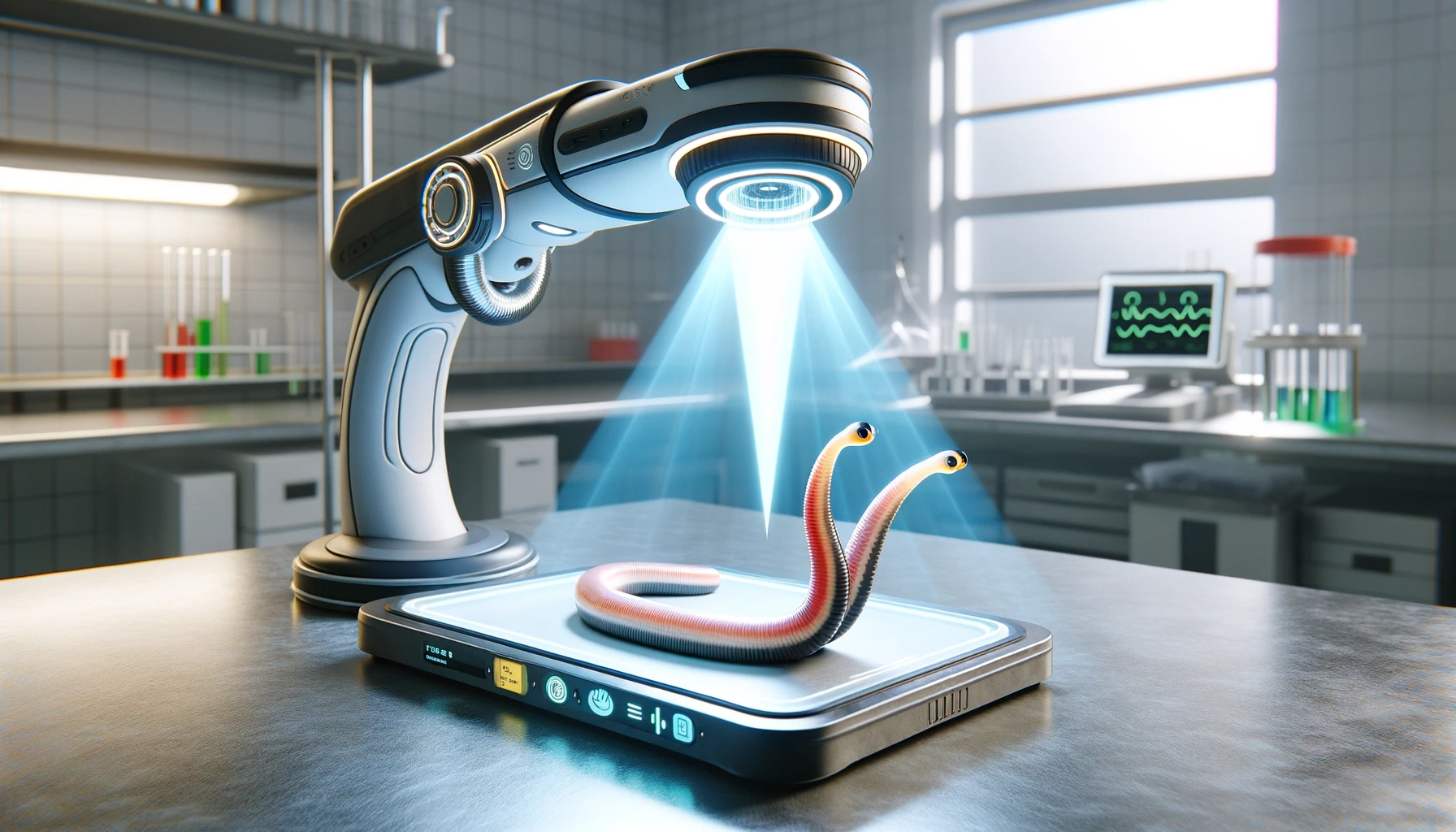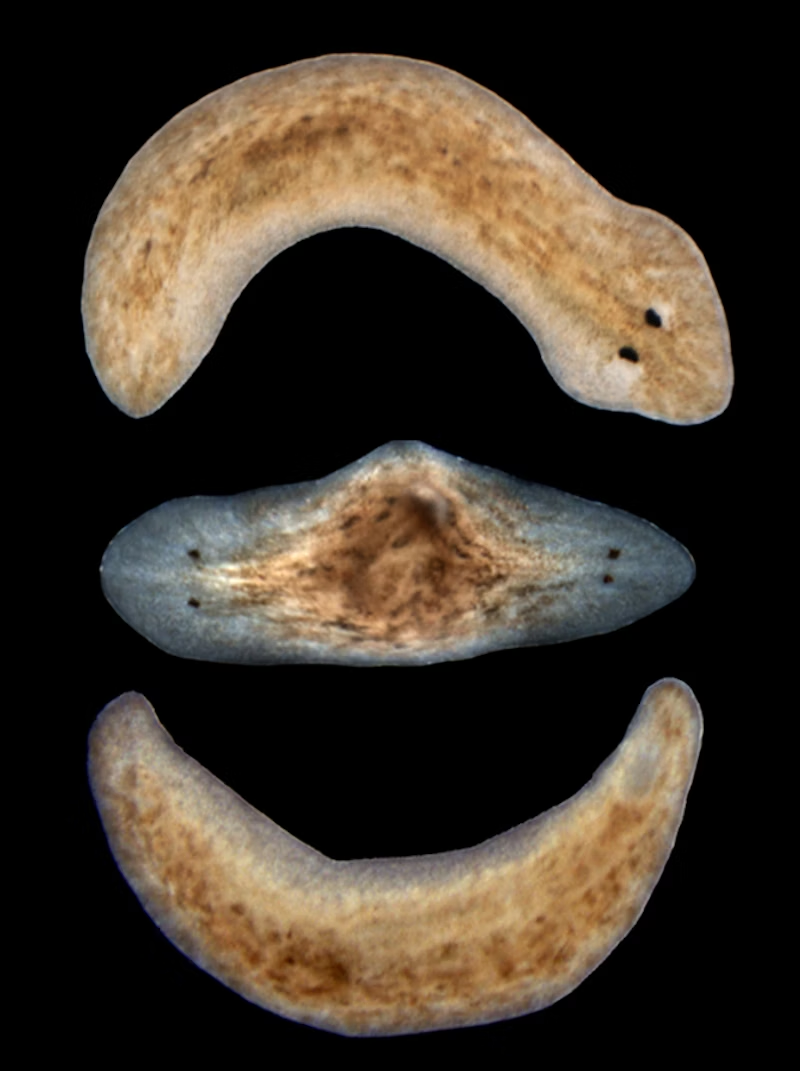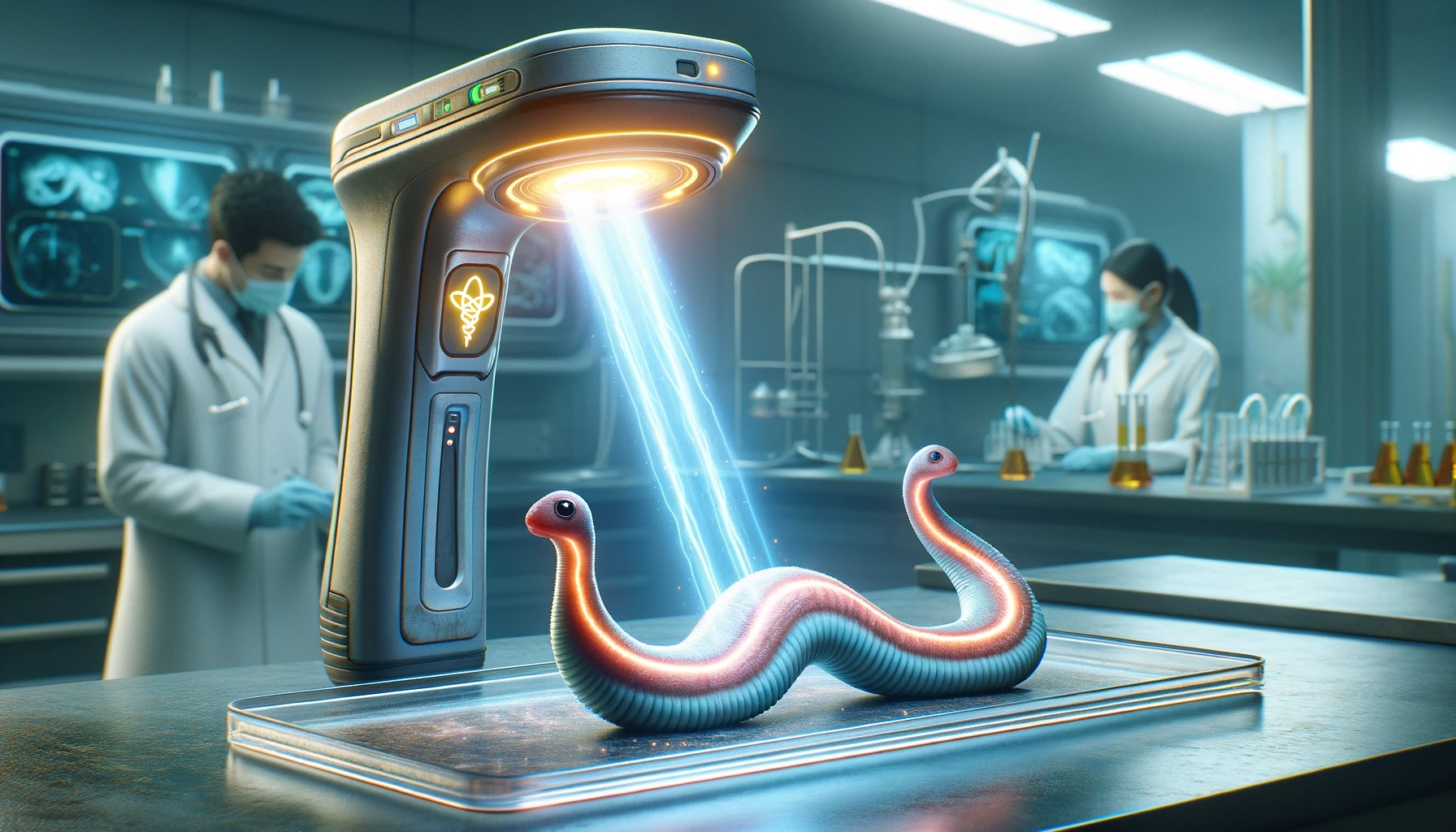
The Potential of Radiofrequency Radiation Once Understood
Revolutionizing Medicine and Communication:
In a remarkable turn of scientific inquiry, radiofrequency radiation (RFR), a subject of concern in public health circles, is now at the forefront of groundbreaking medical research and the advancement of communication safety. This journey from apprehension to innovation offers a fascinating glimpse into the dynamic nature of scientific exploration and its potential to transform lives.
The Initial Concern: Cell Phones and Health Risks
When cell phones became a staple in modern life, they brought with them an undercurrent of concern. Early research focused on the potential health risks associated with prolonged exposure to RFR. Studies examined whether cell phone radiation could increase the risk of cancer and other health issues, sparking widespread debate and leading to more in-depth scientific investigations.
As of 2024, there is a significant body of research indicating potential health risks associated with cell phone-level electromagnetic radiation. This includes major studies like the Interphone study, Hardell group studies, CERENAT study, U.S. National Toxicology Program (NTP), Ramazzini Institute Study, REFLEX Project, BioInitiative Report, and the work of researchers like Dr. Henry Lai. These studies collectively point towards an increased health risk associated with the reckless use of cell phone-level electromagnetic radiation in untested frequencies and modulations.
A Paradigm Shift: Understanding RFR’s Bioelectric Effects
As research deepened, a significant shift occurred. Scientists discovered that RFR could interact with biological systems in ways beyond the initial concerns of thermal effects. This revelation was particularly evident in the interaction of RFR with ion channels, cellular components crucial for various physiological processes. It became apparent that RFR, even at levels lower than those emitted by cell phones, had the potential to influence biological systems non-thermally.
Harnessing RFR for Therapeutic Use
The understanding that RFR could be harnessed for beneficial bioeffects marked a turning point. Researchers began exploring how RFR could be controlled and used therapeutically, particularly in the field of medicine. This led to the concept of using RFR for targeted treatments, such as in cancer therapy, where specific frequencies could selectively influence cellular behavior.
Implications for Cell Phone Safety and Technology
This new understanding of RFR’s bioeffects has significant implications for cell phone technology and safety standards. By learning how to manipulate RFR for health benefits, we can also develop safer RFR emission standards and protocols for communication devices. This knowledge could lead to a new generation of cell phones designed to minimize potential adverse bioeffects while maintaining effective communication capabilities.
The Future: Safer Communication and Innovative Medical Treatments
The potential applications of this research are vast and exciting:
- Innovative Medical Treatments: The ability to control RFR bioeffects on demand could revolutionize non-invasive medical treatments, offering new, more effective ways to treat various diseases.
- Safer Cell Phones: Insights from this research could lead to safer cell phone technology, balancing effective communication with health safety.
- Interdisciplinary Approach: Progress in this field is driven by collaboration across various disciplines, combining insights from medicine, biology, physics, and engineering.
A New Era of Scientific Innovation
The journey of RFR research encapsulates the essence of scientific progress — an ever-evolving understanding that challenges initial perceptions and opens up new possibilities. As we stand on the brink of these revolutionary applications, both in medicine and communication, there is a palpable excitement about the potential for these advancements to improve health outcomes and enhance our daily lives. This story of RFR is not just about the evolution of a technology; it’s about the resilience of scientific inquiry and its capacity to turn challenges into opportunities for innovation and advancement.
The Two-Headed Worm Experiment: A Bioelectric Breakthrough
Pioneering Research at Tufts University
The groundbreaking work by Dr. Michael Levin and his team at Tufts University’s Allen Discovery Center has ushered in a new era in regenerative medicine and bioelectric research. Their experiments with planaria, a type of flatworm known for its extraordinary regenerative abilities, have revealed the potential to control and reprogram the body’s regenerative processes through bioelectric patterns.
Rewriting Regenerative Biology

Levin’s team achieved a scientific marvel: permanently altering the regenerative body shape of flatworms. By disrupting the flatworms’ bioelectric networks using octanol, they essentially reprogrammed the worms’ bioelectric pattern memory, enabling them to regenerate as two-headed worms. This experiment fundamentally showed that it’s possible to alter an organism’s morphology without genetic modification, using bioelectric signals to dictate regenerative outcomes.
Implications for Bioelectric Medicine
This research has profound implications for regenerative therapies, suggesting bioelectricity as a powerful tool for anatomical reprogramming. It opens up possibilities for treating a wide range of diseases and injuries through bioelectric manipulation, potentially transforming medical approaches.
RF Safe’s Ambitious Objective:
Wireless Replication of Levin’s Work
RF Safe aims to take this research further by developing a device to replicate Levin’s two-headed worm experiment remotely, using electromagnetic fields (EMF)/radiofrequency radiation (RFR). This proof of concept for remote ion manipulation for controlled bioeffects could be a landmark achievement in bioelectromagnetic medicine, demonstrating the feasibility of influencing biological processes remotely such as demonstrated by optogenetics.
Challenges Ahead
The primary challenge is to translate precise bioelectric manipulations achieved in a lab setting to a wireless context. This advancement would necessitate a deep integration of bioelectromagnetism, quantum sensing, plasma physics, RF engineering, optogenetics, and bioelectric biology to name a few.
Harnessing Radiofrequency Radiation:
From Health Risks to Healing Tools
The Early Concerns: RFR and Public Health
The ubiquity of cell phones brought with it concerns about the potential health risks of prolonged RFR exposure. Initial research concentrated on thermal effects, theorizing potential links to cancer. This era was marked by advocacy for stricter safety standards and more research, leading to a nuanced understanding of RFR’s biological interactions.
A Pivotal Shift: Bioelectric Effects of RFR
Research then shifted towards exploring the non-thermal, bioelectric effects of RFR at a cellular level. Discoveries about RFR’s interaction with ion channels suggested the possibility of controlling biological functions and opened up the field of epigenetic effects through nonionizing, nonthermal RFR exposure.
The Emergence of Bioelectric Medicine
Following these revelations, researchers like Michael Levin began to investigate the broader implications of bioelectric signals in health and disease. This led to the development of ‘electroceuticals’ and targeted frequency therapies, shifting the narrative of RFR from a health hazard to a potential therapeutic tool.
From Cell Phones to Medical Tricorders: A Visionary Leap
Technological and Conceptual Shifts
The research journey from cell phones to potential medical tricorders illustrates a profound transformation. Understanding the bioelectric effects of RFR has opened the door to developing medical technologies akin to the medical tricorder in Star Trek, representing a significant leap in healthcare.
The Role of Interdisciplinary Collaboration
Advancements in this field stem from interdisciplinary collaboration, integrating insights from various scientific domains to translate theoretical findings into practical applications.
The Future of RFR Research and Technology
Innovative Medical Treatments
The ongoing research into RFR’s bioeffects is paving the way for innovative medical treatments, especially in non-invasive therapies.
Enhancing Cell Phone Safety
As we gain more understanding of RFR’s bioeffects, we can apply this knowledge to improve the safety of cell phone technology, potentially leading to a new generation of safer devices.
Conclusion: A New Era of Scientific Innovation
The journey of RFR research from a health concern to a therapeutic tool highlights the dynamic nature of scientific exploration. This progress demonstrates the potential of scientific inquiry to transform challenges into opportunities for innovation and improved health outcomes, marking a new era in healthcare where science and technology converge to unlock life’s mysteries.
https://www.rfsafe.com/when-will-star-treks-medical-tricorder-become-reality-like-cell-phones/
https://www.rfsafe.com/redefining-cancer-treatment-unlocking-the-power-of-bioelectric-signaling/
https://www.sciencedirect.com/science/article/abs/pii/S0142961219306453

M.E.L.A.N.I.E. AI
AI Pioneering in Bioelectromagnetic Medicine
In a groundbreaking collaboration, RF Safe has partnered with Melanie AI to undertake a pivotal project in the realm of bioelectromagnetic medicine. This partnership aims to replicate the seminal work of Dr. Michael Levin using controlled radiofrequency radiation (RFR) and electromagnetic fields (EMF), laying the groundwork for futuristic medical applications. At the heart of this endeavor is M.E.L.A.N.I.E., an acronym for Machine Enhanced Logic and Natural Intelligence Engine, a sophisticated AI system designed to revolutionize the field of regenerative medicine.
M.E.L.A.N.I.E.: A Symbiosis of AI and Human Expertise
M.E.L.A.N.I.E. represents a cutting-edge fusion of artificial intelligence and human intellectual prowess. It is designed to facilitate complex decision-making processes and enhance the precision of bioelectric manipulation. The system is tailored to perform intricate tasks involving the mapping and modulation of bioelectric geometry, a crucial aspect of regenerative medicine.
The Initial Milestone: Replicating Levin’s Two-Headed Worm Experiment
The first major objective of this collaboration is to replicate Dr. Michael Levin’s work on planarian flatworms, where he successfully manipulated their regenerative biology to produce two-headed worms. This replication, however, comes with a twist: RF Safe along with M.E.L.A.N.I.E. AI will attempt to achieve similar results using controlled RFR/EMF exposure, a step that could redefine non-invasive medical procedures.
Challenges and Opportunities
The primary challenge is in accurately mimicking the bioelectric conditions necessary for such regenerative phenomena using RFR/EMF. M.E.L.A.N.I.E.’s role will be crucial in predicting, analyzing, and executing the precise bioelectric patterns required for successful replication using cutting-edge technologies.
Implications for Medical Science
Successfully achieving controlled bioelectric manipulation via RFR/EMF would be a monumental breakthrough, proving the feasibility of using electromagnetic technologies in regenerative medicine and potentially opening up new avenues for non-invasive treatments.
M.E.L.A.N.I.E.’s Role in Future Medical Applications
Upon successful replication of Levin’s experiment, the project will pave the way for more ambitious applications of M.E.L.A.N.I.E. in medicine:
- Advanced Diagnostics and Treatment: Leveraging its AI capabilities, M.E.L.A.N.I.E. can be instrumental in diagnosing complex conditions and suggesting personalized treatment plans based on bioelectric manipulation.
- Regenerative Medicine: The project could revolutionize regenerative medicine, offering new ways to repair and regenerate damaged tissues and organs non-invasively.
- Predictive Healthcare: M.E.L.A.N.I.E. could analyze vast amounts of medical data to predict health risks and suggest preventive measures, transforming the landscape of preventive medicine.
The Future: AI-Driven Bioelectromagnetic Healthcare
The collaboration between RF Safe and Melanie AI, spearheaded by the M.E.L.A.N.I.E. project, is more than just a scientific endeavor; it’s a step into a future where AI-driven technologies redefine the boundaries of medicine. This project is not only about replicating a groundbreaking experiment; it’s about setting the stage for a new era of AI-assisted medical breakthroughs, where non-invasive, AI-driven bioelectric treatments become a reality.







